I have some cottage garden lessons learned and some lessons ignored and some I’ve completely failed to learn anything from at all.
Learning a lesson with tulips

Fabulous tulips
I’ve had fantastic displays in the past but nowadays protecting the bulbs and the new shoots from squirrels is getting harder and more impossible. Also bulbs planted in the borders are often not thriving and produce a tiny flower or none at all. I’m really wondering if it’s worth it.
I protect newly planted bulbs with wire cloches and keep them on until at least the end of March. Squirrels would not only dig up the bulbs but they also eat the new shoots. I’ve even found a pot of lovely tulips in full flower completely destroyed by squirrels having snapped each head off, for no reason other than vandalism it seems.
Chilli powder and moth balls as deterrents didn’t work at all. Don’t waste your time with them.

So this autumn I will be thinking very hard about which varieties of tulip I can best rely on without too much faffing and maybe it’s goodbye to past glories.
Learning a lesson with daffodils
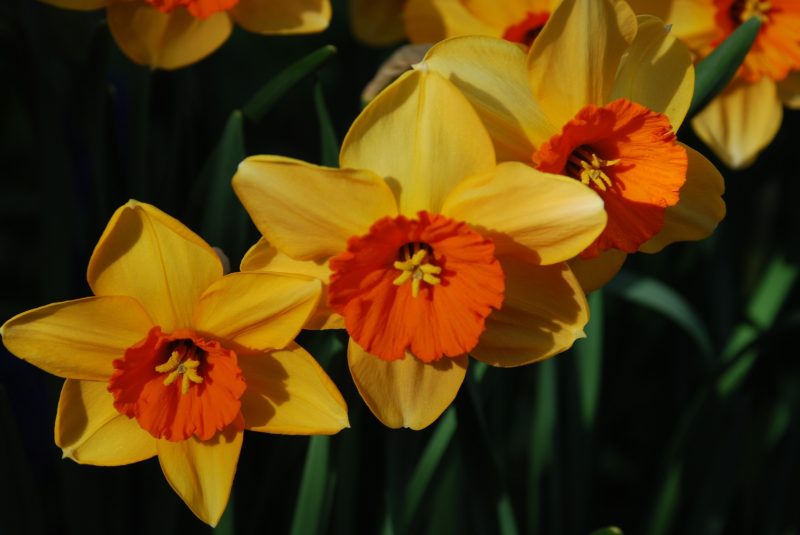
I’ve grown daffodils all my gardening life and couldn’t imagine not planting more each autumn. From experience I find I need their colour in February to start hopes of Spring and I don’t need ones that flower in April when so much else is growing fast.
Previous mistakes have been planting tall sturdy varieties with foliage so strong that it takes till July to die down. Some are monsters and I’ve now dug all those up. They don’t fit into a cottage garden feel.
Sadly this year so many blooms have been eaten by slugs or pigeons or whatever that again I wonder if it’s worth it. Other gardeners have said the same. They look like this
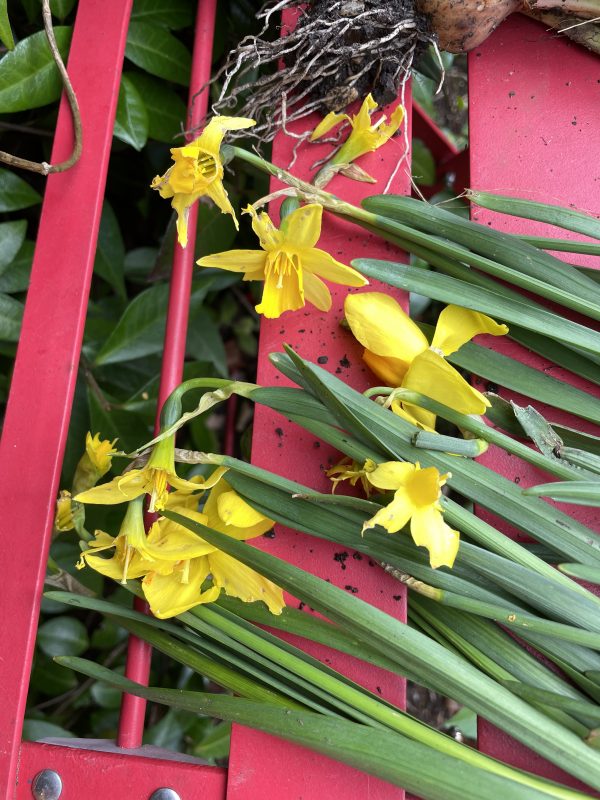
munched and nibbled daffodils
As with tulips, I will need to work out which ones get more eaten than others. I think bright yellow attracts rotters more than pale or white ones so that would be a start. I probably can’t go wrong with the short early daffodils and I’ve written about those here.
Remember to cut down epimedium leaves

Very pretty epimedium evergreen leaves
Epimedium leaves grow fresh in March and can hang around all year, sometimes changing colour and looking quite good all through winter. However, the tiny spindly flowers pop up through the leaves in very early Spring and unless I shear off the leaves around Christmas, the flowers will be completely smothered by the old leaves and I won’t see the flowers at all. I’ll then have to ignore that or laboriously cut off each leaf stem very very carefully to avoid cutting off the flowers.
Lesson – cut down all epimedium leaves in December even though they look quite nice and don’t forget to do it like I did this year.
A hard lesson learned with Celandine
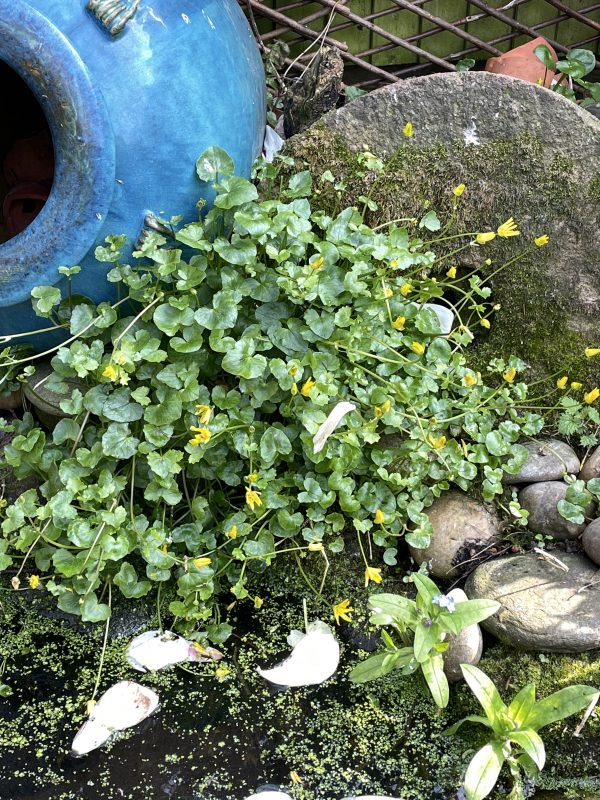
Celandine
Every year the little plant of lesser Celandine aka a weed, tries to cover every inch of my borders. The only plus is that the yellow flowers are good for wildlife and the leaves die by May/June so they disappear from sight. But the little blighters are busy multiplying underground with their bulbs the size of a grain of rice and the next year there they are again but MORE of them. This year they really excelled themselves and carpeted every inch of the borders and every crack and crevice.
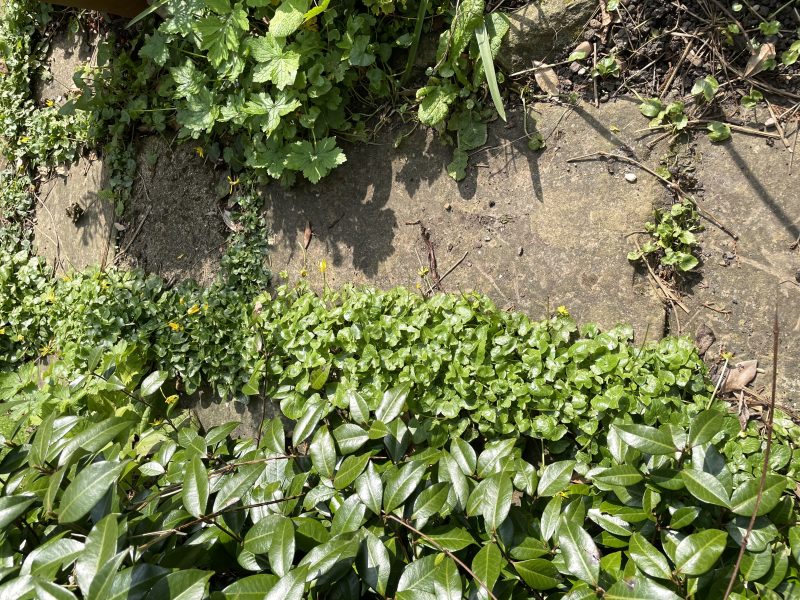
Celandine
I tried not to care but then I did care, a lot, and started to try and dig/pull them up but getting rid is totally impossible. So lesson here is to dig them up when they first arrive in your garden if you don’t want them to spread.
Success getting rid of wild garlic
I was overrun with the white flowered onion/allium with the triangular leaves which came up everywhere. Called Allium triquetrum officially but called very rude words around here. It has bulbs the size of a pea, smelt horrible and proved impossible to dig out. I just didn’t want it and the only way I tackled it was to pull up the leaves to starve the bulbs and I can report that this year I haven’t seen ONE unwanted flower. Success! So no photo!
Leave some so-called weeds alone

Wonderful dandelions
Since reading a lot by Jack Wallington and especially his latest book A Greener Life I have changed my attitude to some weeds. I now leave dandelions alone and positively welcome them in the garden. I also used to dig out the hairy blue alkanet plant but now realise it’s a great addition for wildlife and within reason it can stay. I just dig out maybe one in three and leave the rest.
I still don’t want the garlic but I can allow some brambles, quite a lot of ivy and some alkanet now without seeing them as a problem. Changing our entrenched attitude to things in the garden really can make life a lot easier.
So there are my cottage garden lessons learned and I hope they help to avoid some of the mistakes that are easily made. You can make your own mistakes – good luck and good gardening.
Please subscribe above if you would like my intermittent blogs to pop into your inbox.
Best wishes, Julie

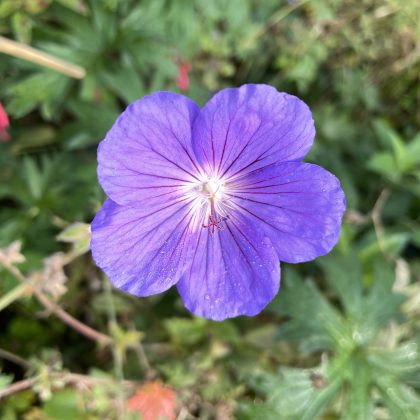
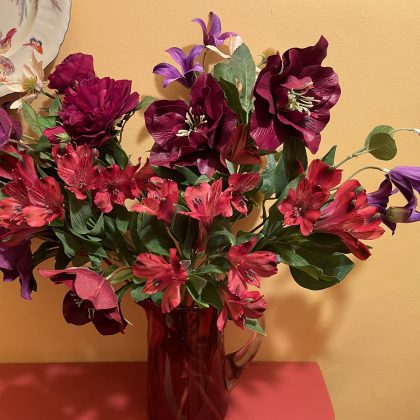
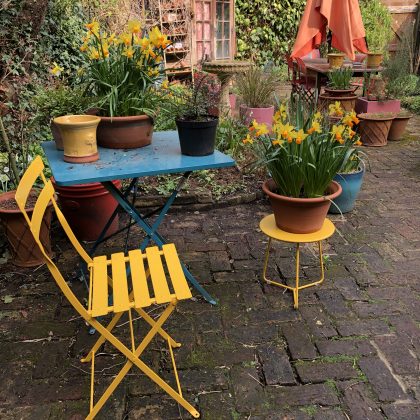
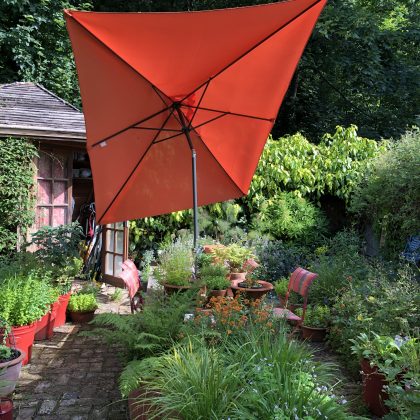
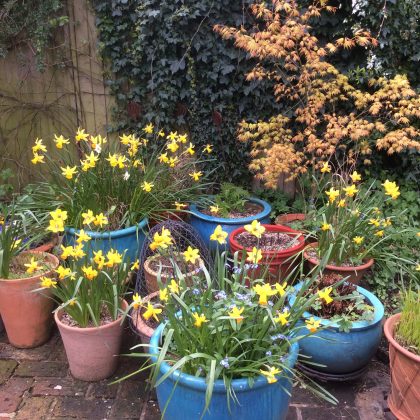

We certainly leard from hard experience over the years and sometimes have regrets about what we allowed grow in our gardens but it’s all part of gardening and good for that.
Hmmm. Sounds very much like what goes on here.
Oh good, that sounds reassuring!
Dear Julie, We have very much the same problem out here in Yorkshire, flower heads snapped off and lots of slug damage, so for us the answer seems to be, to grow short statured fosterini and early double tulips in pots and raise them off the ground and smear vaseline around the pot rims which seems to work. Hope to catch up with you at the Plant Fair at St Michael’s on 7th May. Note new time. 9.30am to 1.30pm. Our good wishes. JuneX